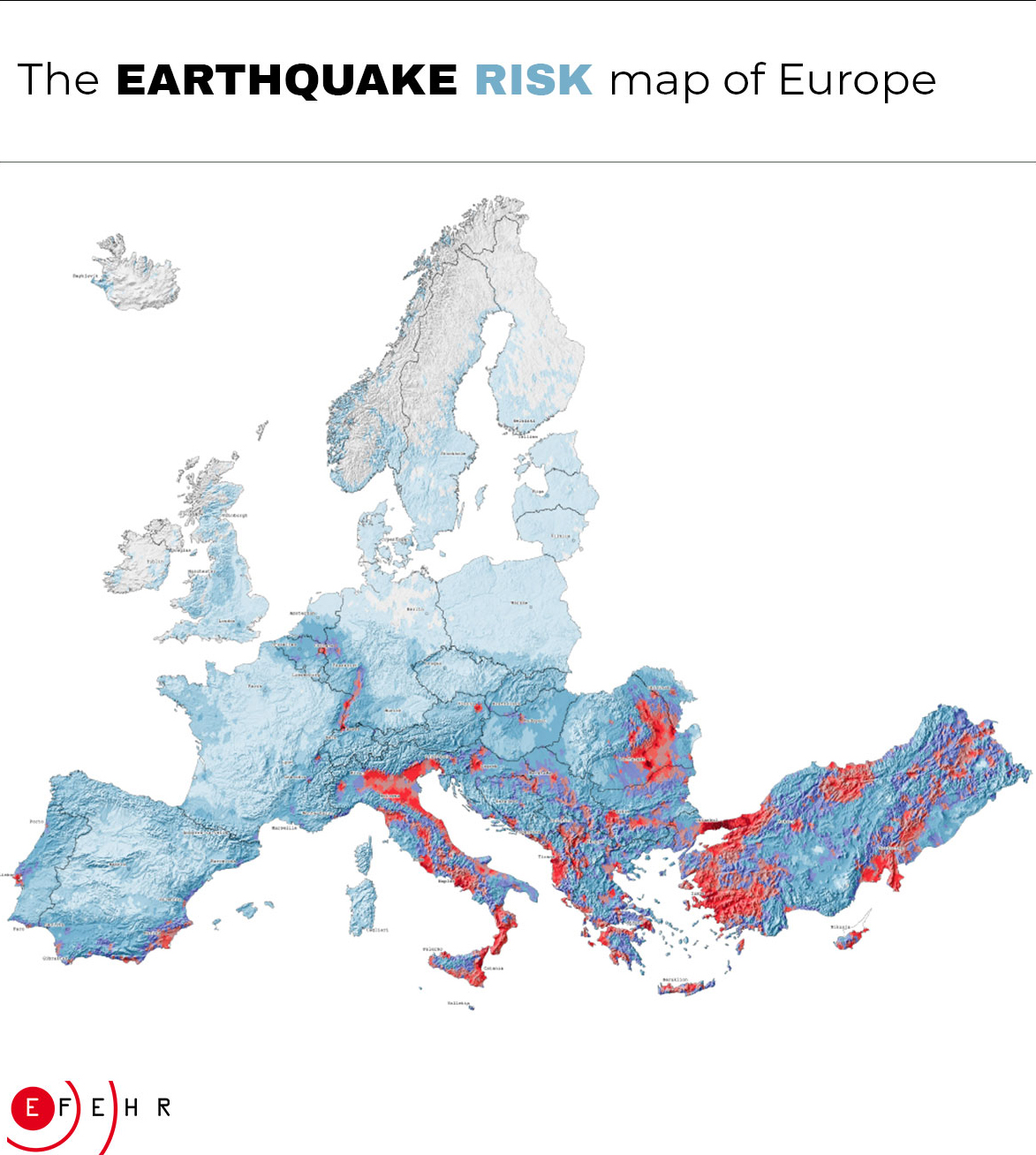Il 28 Aprile 2022, sono stati presentati i modelli Europei di rischio e pericolosità sismica 2020.
Lo sviluppo di questi modelli è il risultato della collaborazione di un team principale di ricercatori provenienti da diverse istituzioni europee, fra cui EUCENTRE. Si tratta di un lavoro congiunto avviato oltre 30 anni fa e che ha coinvolto diverse centinaia di ricercatori in tutta Europa. Lavoro che è stato realizzato grazie ai finanziamenti di diversi progetti europei e supportato da gruppi nazionali nel corso di tutti questi anni.
Il lavoro svolto ha visto l’aggiornamento del modello di pericolosità sismica, che è andato a sostituire il modello del 2013, e la realizzazione del primo modello europeo di rischio sismico, open e riproducibile.
Benché non sia possibile prevenire i terremoti, né prevederli con precisione, efficaci misure di mitigazione basate sulle conoscenze apprese tramite i modelli di rischio e pericolosità sismica possono ridurne significativamente gli effetti nefasti. I modelli di rischio e pericolosità sismica europei 2020 offrono informazioni riguardo alla distribuzione spaziale dei livelli attesi di scuotimento del suolo dovuto a terremoti, alla loro frequenza e al potenziale impatto sull’ambiente antropizzato e sul benessere delle persone. A tale scopo, sono stati aggiornati e armonizzati tutti i set di dati su cui si fondano i modelli: un lavoro complesso, considerata la mole di dati e la complessa configurazione tettonica Europea. Questo tipo di approccio è essenziale per definire strategie di mitigazione dei disastri efficaci a scala transnazionale, che supporteranno la definizione delle polizze assicurative o l’aggiornamento di codici edilizi a livello Europeo (ad es. l’Eurocodice 8 ) e nazionale. Il modello di pericolosità sismica, il modello di rischio sismico, e i corrispondenti dati di input, sono tutti liberamente accessibili.
EUCENTRE ha coordinato lo sviluppo del Modello Europeo di Rischio Sismico 2020. Questo ruolo di coordinamento è iniziato con il progetto SERA, in cui i ricercatori di EUCENTRE hanno guidato i team in tutta Europa lavorando allo sviluppo delle varie componenti del rischio sismico europeo e hanno organizzato una serie di workshop per coinvolgere la più ampia comunità scientifica e le parti interessate. Questa attività è poi proseguita dopo il progetto SERA, nell’ambito delle responsabilità di EUCENTRE come fornitore di servizi per il rischio sismico EFEHR (http://risk.efehr.org/). I ricercatori di EUCENTRE hanno combinato i modelli di pericolosità, risposta del sito, esposizione e vulnerabilità nel calcolo del rischio sismico, hanno convalidato i risultati e hanno creato i prodotti finali del rischio sismico, inclusa la mappa dell’indice di rischio sismico europeo.
 Eucentre è una Fondazione di diritto privato senza scopo di lucro che persegue una missione di ricerca, formazione e erogazione di servizi nel settore dell’ingegneria sismica e, più in generale, dell’ingegneria della sicurezza
Eucentre è una Fondazione di diritto privato senza scopo di lucro che persegue una missione di ricerca, formazione e erogazione di servizi nel settore dell’ingegneria sismica e, più in generale, dell’ingegneria della sicurezza  Eucentre promuove Scienza, Ricerca e Innovazione a beneficio della collettività, offrendo metodologie mirate e soluzioni concrete per prevenzione, sicurezza e resilienza. Collabora con istituzioni e imprese, diffondendo competenze orientate al vantaggio comune.
Eucentre promuove Scienza, Ricerca e Innovazione a beneficio della collettività, offrendo metodologie mirate e soluzioni concrete per prevenzione, sicurezza e resilienza. Collabora con istituzioni e imprese, diffondendo competenze orientate al vantaggio comune. Tavole vibranti
Tavole vibranti Altri sistemi di prova
Altri sistemi di prova Eucentre conduce attività di ricerca su ingegneria sismica e riduzione del rischio, attraverso prove di laboratorio e analisi numeriche, per migliorare il comportamento sismico di strutture e terreni e sviluppare tecniche innovative di consolidamento antisismico.
Eucentre conduce attività di ricerca su ingegneria sismica e riduzione del rischio, attraverso prove di laboratorio e analisi numeriche, per migliorare il comportamento sismico di strutture e terreni e sviluppare tecniche innovative di consolidamento antisismico. La Fondazione promuove attività formative diversificate e di alta qualità, rivolte a contesti accademici e professionali, con programmi e iniziative costantemente aggiornati e innovativi per rispondere alle esigenze in continua evoluzione del settore e della società
La Fondazione promuove attività formative diversificate e di alta qualità, rivolte a contesti accademici e professionali, con programmi e iniziative costantemente aggiornati e innovativi per rispondere alle esigenze in continua evoluzione del settore e della società  Eucentre assicura una comunicazione per informare istituzioni, professionisti e cittadini sulle attività e i progetti in corso, con l’obiettivo di diffondere contenuti e conoscenze utili e accessibili a tutti. Contribuisce a promuovere una cultura della prevenzione e della resilienza, condivisa e consapevole.
Eucentre assicura una comunicazione per informare istituzioni, professionisti e cittadini sulle attività e i progetti in corso, con l’obiettivo di diffondere contenuti e conoscenze utili e accessibili a tutti. Contribuisce a promuovere una cultura della prevenzione e della resilienza, condivisa e consapevole.

